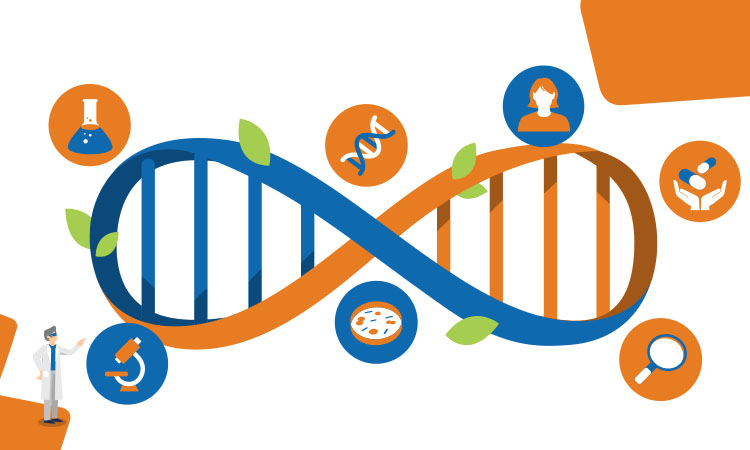Personalized Medicine: The Industry’s Future

With so many options for personalizing our lives, is the personalization of medicine far behind? With all the data available, how can the industry bring personalized medicine to patients? This article explores what is currently available and where the pharmaceutical industry can move forward to better serve patient needs.
In modern society, we are used to personalization making everything around us reflect our personality and tastes. From streaming channels and online shopping recommendations, to restaurants with a wealth of food options, to music suggestions that are customized to our liking, we are now accustomed to having our worlds shaped for us. Why, then, should our medicine be any different? Every human is unique, and biology does not offer a one-size-fits-all approach. Why should our diseases, and our treatments, not be unique to us?
Personalizing medicine is not new: targeted therapy has existed in oncology for over 20 years, with genomic testing allowing the best drugs and drug combinations to be selected for the specific cancer type. In a more common example, most patients know, from experience and empiricism, which painkiller works best for them despite not knowing the complicated underlying biomedical processes. By making this choice, patients are personalizing their treatment plan for minor aches and pains.
Advances in molecular diagnostic technologies, unstoppable advances in storage capacity and computing power, and sophisticated machine learning algorithms allow us to push the boundaries in treatment pathways.1 From image analysis of skin lesions to the very DNA of tumor cells, this all will allow doctors in the future to choose the optimal drug for their patients.
How to Best Serve Patients
Knowing that this is where the healthcare industry is headed—and listening to what patients want—what changes need to be made in the pharmaceutical industry to best serve patients in the future? How does the industry address the question of what patients really need? At this stage, one may say the level of “personalization” mentioned is still meeting the needs of a mass population.
From the choice of existing drugs—A, B, or C—the doctor predicts which one might work best for their patient, and at which dosage interval and concentration. However, with modern molecular design tools, it is only a question of time before pharmaceutical companies will take a common drug backbone and modify it so that it is specific to an individual’s need.
The future of true personalized medicine is the design and manufacture of one drug for one patient;2 whether this is possible or sustainable for the pharmaceutical industry depends on the clever utilization of one of the most untapped resources: data.
By harnessing the power of data, the possibilities are truly endless, from a drug discovery perspective right through to clinical management of a patient's condition.
As Mike Gualtieri from analyst firm Forrester Research put it at a 2015 conference: “I disagree with the notion that data is the new oil. It‘s as infinite as the power of the sun. And just like the power of the sun, we’re barely using it at the moment.”3
For centuries, doctors have focused on patients’ symptoms, but what we call disease is probably only a classification of underlying molecular events that may differ from patient to patient. And treatments of these diseases were themselves variations of what was considered a remedy. Remember, the FDA is only 115 years old. Before that, there was virtually no oversight of what doctors could administer.4
We now have regulations and documentation that manufacturers are producing products in a controlled environment under robust, stable conditions. We have data detailing where each drug is sold most often, and even what brand of drug is most widely prescribed in particular geographies.
The wealth of data that may help patients can come from a variety of sources, be it commercial data from insurance companies or information collected as part of the pharmaceutical manufacturing process to blueprint disease mechanisms known in the biomedical literature.
Map onto that what pharmaceutical research and development (R&D) knows about the mechanism of action of their successful compounds and new data coming directly from the patient that we have only just started to analyze, and the next generation of therapeutics available to patients will be more efficient and more efficacious.

The Current State of Personalization
All of this data can contribute to improved drug development, enhanced manufacturing processes and quality, and targeting of healthcare providers and patients for clinical trials well into Phase IV.5 But from a scientific point of view, it is important to consider the following questions:
- Across the end-to-end process of drug discovery to patient treatment, what variables are unknown?
- Are we missing an opportunity to collect and apply additional data?
- How much data actually needs to be available and collected in order to create a truly personalized patient experience?
- Where does data need to be collected from at each point in the process?
In the clinical development stage of drug development, we have previously treated all patients in a trial the same; however, new data modalities allow us to slice and dice these cohorts into virtual subgroups by asking specific questions and collecting additional data that is personal to the patient’s individual behavior:
- Do people whose fitness regime is better than average respond differently to the drug?
- Do they exhibit fewer adverse effects?
- Do lifestyle choices impact the outcome of a drug under investigation?
If we would have been able to revisit failed clinical trials, this strategy could have allowed some of them to meet the strict FDA criteria for approval. Across R&D, specific efforts are underway that illustrate how we are integrating new platforms and methods to unlock the power of data. One example is multiomics data (big data sets consisting of several “ome” data, such as genome, proteome). By providing platforms that allow scientists to better use clinical and translational data, there is increased generation of innovative ideas for new biomarkers and drug targets by integrating multiomics data from multiple sources.6
Quality and Quantity of Life
Consumers—and patients—are not only focused on quantity of life, but also quality of life. If we manage and incorporate differentiators to drugs across the entire holistic patient journey—be they wearables, smart caps, devices, or apps—we could extrapolate further critical data. This would flip the paradigm completely.
Instead of treating people once they become sick, we would move into the area of preventive medicine. In the same way we have pre-knowledge and a warning system when something is about to go wrong or needs additional attention with our cars, our healthcare could have the same—if not better—mechanisms. The most powerful form of personalized medicine is enough data and expertise to stop a disease or condition before it even manifests.
Instead of treating people once they become sick, we would move into the area of preventive medicine.
Wealth of Data
People are already tracking and collecting data about themselves7 via a variety of devices. The most widespread consumer data collection sources are wearables that monitor electrocardiographic and heart health, sleep, and fitness, as well as smart homes, smartphones, and devices that use GPS.
On top of that, elite athletes are constantly measuring stress, exercise regimen, respiratory rates, strain, and recovery time. If these parameters are measured in elite athletes to ensure peak performance,8 why would the rest of the world also not use them? With the advancement of mobile technologies and the popularization of smart devices, we are developing digital health management tools to help patients better manage diseases and daily life.
The Uniqueness of Our DNA
Electronic tools may enable the pharmaceutical industry to monitor patients’ lifestyle and quality of life. Ultimately, the most unique and fundamental individuality is in the DNA of people. This is the foundational key for personalized medicine.
To unlock this data, we are at the stage where generating genomic profiles of a patient is relatively affordable and efficient. DNA sequencers now come in all form factors and throughput levels. The Oxford Nanopore9 is a device the size of an iPhone that can help sequence DNA with little preparation in field laboratories and on the go. The newest machines from Illumina10 sequence several human genomes in a day, at a cost of less than USD $1,000 per sample. So, reading DNA is easy. Storing all that information is a bit harder. And interpretating what it means is really difficult. Until we have a good understanding how a genome encodes the mystery of life, and that includes everything from gene regulation to protein folding, our utility of DNA information is limited.
Pharmaceutical companies focus on well-understood biomarker genes to monitor patient diversity, mostly on a per-gene level, sometimes for two or three genes at a time. However, there are more than 20,000 genes encoded in the human genome. It is going to be a long time until we can fully leverage patients’ genome information, if ever. How could this data be used? For example, DNA is transcribed into RNA, and that RNA is then translated into proteins. Think of DNA mutations that impact the rate or efficiency at which proteins are produced, ultimately yielding more or less of a vital protein.
This “personal medicine” would become truly personal: for example, by editing individual nucleotides in the context of the patient’s genome. At this stage, this is all blue sky and probably not affordable to anyone. But then, think that the first human genome sequence is just 20 years old, and it cost several billion USD at the time.
Conclusion
Is the future of personalized medicine a mix of nature and nurture? If so, does the pharmaceutical industry move toward becoming a preventive industry rather than curative, and when? We have a unique opportunity to integrate the data at our fingertips and to create new methodologies of healthcare and patient management. These aforementioned aspects will impact the pharmaceutical industry and, ultimately, the patient experience, accelerating and transforming the way of getting much-needed medicines to the patients who need them.




